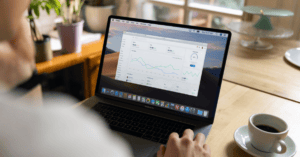5 Reasons Your Email Click-Through Rates are Dropping (and What to Do About It)

Email marketing is a key strategy for brands to engage with their audience in a highly personalized way. However, as all of our email inboxes become more crowded, it’s more important than ever for marketers to craft compelling emails that actually engage their audiences.
What’s a “Good” Email Click-Through Rate?
A “Good” CTR depends on your industry and list quality, but generally speaking, 3% or higher means you’re in solid shape. Campaign Monitor puts the average between 2.3% and 3.7%. If you’re below that range, it’s worth digging into.
If you’ve noticed a drop in your email click-through rates (CTRs), it could be attributed to one of the following factors:
1.Your Emails Don’t Work Well on Mobile
Over 40% of emails are viewed on mobile devices, so it’s crucial to ensure that all your brand’s emails are mobile-responsive, or your click-through rates will suffer. This includes adjusting text size for better readability on mobile screens, as well as smartly organizing or hiding Call to Actions (CTAs) and images on mobile viewing to create a seamless user experience across all devices.
How to Fix It:
- Use mobile-friendly templates that adjust automatically
- Keep subject lines short so they don’t get cut off
- Make buttons big enough to tap without zooming
Pro Tip: Always use 16px live text for email copy to ensure readability.
2.Your CTA Is Getting Lost
You might think more links equal more clicks, but too many choices can backfire. One clear, focused call-to-action usually works better than five scattered ones. HubSpot even found that reducing the number of CTAs can boost clicks by over 300%. To determine the most engaging language for your audience, experiment with A/B testing different CTAs, such as “Shop Now” versus “Find Your Favorite” or “Discover More.”
How to Fix It:
- Stick to one main CTA per email
- Use direct language like “Get the guide” or “Try it free”
- Make it pop—visually and contextually
Pro Tip: Use HTML for CTAs instead of images to ensure they display correctly, even when images are blocked.
3.You’re Incorporating Too Many Images
While images can make emails more visually appealing, they can also cause problems if the recipient has images blocked. To avoid this, always create your emails with at least 25% of the text as live text within HTML elements. This can improve CTRs, accessibility, and inbox placement. For the live text you do utilize, be sure to use a secure web font to ensure accessibility across devices and browsers.
How to Fix It:
- Balance images with real, readable text
- Use alt text so your message still shows if images don’t
- Compress file sizes to speed up load time
Pro Tip: For the few images you do choose to incorporate in your emails, ensure they are properly sized between 600-650 pixels and do not exceed 102 KB.
4. Your List Needs a Cleanup
A well-designed email is only as good as the audience it’s sent to. Regularly cleaning your email subscribers by archiving those who haven’t engaged in the last 360 days is essential, as sending emails to an outdated or unengaged list can significantly reduce CTRs. If you’re not ready to say goodbye to inactive subscribers, consider reactivation or sunset campaigns to re-engage them.
Once your email list is clean, you can create more specialized recipient groups based on a subscriber’s past engagement history. And remember: You should reserve your full recipient list for special promotions and segment it by engagement to send more targeted emails.
How to Fix It:
- Run a re-engagement campaign to wake up dormant subscribers
- Remove anyone who hasn’t opened in 90+ days
- Segment based on behavior and interests for more relevant sends
- Check Mailchimp’s guide for managing subscriber health
Pro Tip: Whenever possible, throttle email sends or use Send Time Optimization (STO) to maximize engagement.
5. Your Subject Lines Aren’t Engaging
Aside from having a clean email list, there is one other thing that can impact CTRs even before recipients open your email: the subject line and preheader. If these elements don’t grab a recipient’s attention, you’re already starting at a disadvantage. Invest time in crafting concise subject lines and preheaders that offer a clear preview of the email’s content while sparking curiosity. Omnisend reports that personalization can lift open rates by 50% or more.
How to Fix It:
- Use urgency, curiosity, or relevance—but don’t bait
- Personalize using name, location, or behavior
- Write a preheader that adds context, not just repeats the subject
Pro Tip: Consider adjusting your “friendly from” name to enhance trust and recognition. For example, “WITHIN” to “WITHIN Newsletter” or “Old Navy” to “Old Navy Kids” or “Old Navy Sale.”
Want to Increase Email Click-Through Rates? Start Here.
With 4.6 billion global email users expected by 2025, email marketing is an essential part of your brand’s daily interactions with consumers. To stay ahead of the curve, it’s important to optimize your email strategies to align with evolving customer behaviors and foster engagement in a manner that feels natural and seamless to them. Here’s a quick checklist to help you get there:
- Personalize beyond first names
- Segment by behavior, not just demographics
- Test subject lines, CTAs, and formats regularly
- Send when your audience is most likely to act